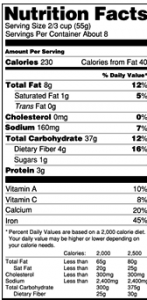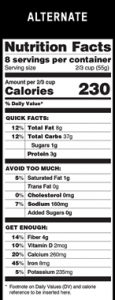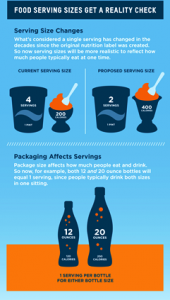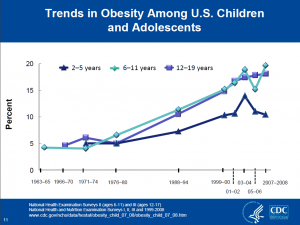WHO tries added sugar guideline again: 10% of daily calories!
While I’m on the topic of sugars (see yesterday’s post), the World Health Organization (WHO) has just called for public comment on proposed new guidelines for intake of “free” (added) sugars:
- Added sugar intake should be less than 10% of total calories per day (50 grams for a 2000 calorie-a-day diet)
- Intake below 5% of calories would confer additional benefits (25 grams)
Although the announcement casually mentions that the draft guidelines reaffirm a previous WHO sugar guideline from 2002, it just as casually fails to mention what happened to that guideline.
I, however, have perfect recall, particularly because I wrote about these events in the Afterword to the 2013 edition of Food Politics:
In the early 2000s, the World Health Organization (WHO) began work on a global strategy to reduce risk factors for chronic disease, obesity among them. In 2003, it published a research report that advised restricting intake of “free” (added) sugars to 10% or less of daily calories. Although this percentage was similar to that embedded in the USDA’s 1992 Pyramid (7–13% of calories, depending on total intake), sugar industry groups strenuously objected, enlisted senators from sugar-growing states to pressure the DHHS secretary to withdraw funding from WHO, and induced the DHHS chief counsel to send a critique of the report to WHO that had essentially been written by industry lobbyists. When released in 2004, WHO’s Global Strategy on Diet, Physical Activity, and Health omitted any mention of the background report or the 10% sugar recommendation.
“Strenuously objected” vastly understates what happened.
Why was the sugar industry so concerned? One 12-ounce Coke or Pepsi contains about 40 grams of sugars. Have one, and you’ve just about done your added sugars for the day.
WHO must either think that the research basis of the 10% sugar guideline is much stronger now (see references below), or that the political landscape has shifted so far in the direction of reducing sugar intake that governments will ignore industry groups this time.
I’m not so sure. I think WHO needs all the help it can get with this one.
Submit comments here. Now!
References
Reports commissioned by WHO
- Dietary sugars and body weight: systematic review and meta-analyses of randomised controlled trials and cohort studies
- Effect on caries of restricting sugars intake: Systematic review to inform WHO guidelines
What happened to the previous guideline
- Waxman A. The WHO Global Strategy on Diet, Physical Activity and Health: the controversy on sugar. Development 2004;47:75–82
- Zarocostas J. WHO waters down draft strategy on diet and health. Lancet 2004;363:1373.
- Kaiser J. The man behind the memos. Science 2004;305:1552-1553.







